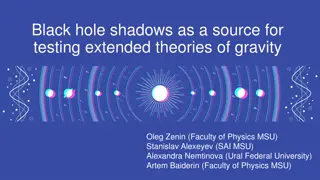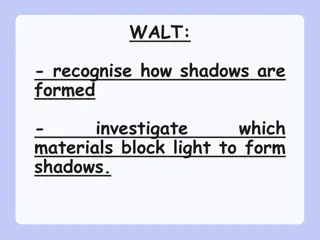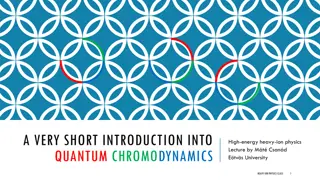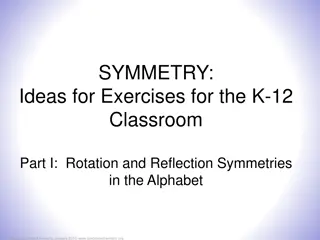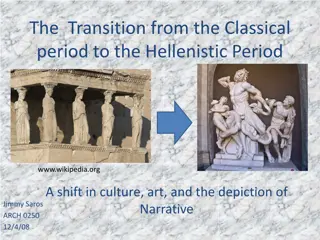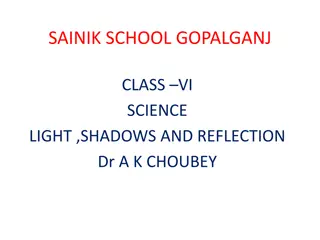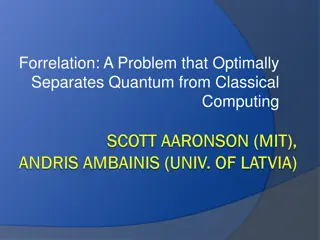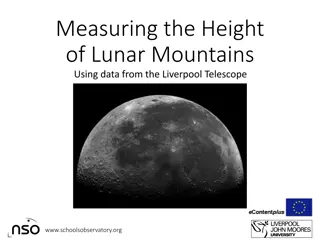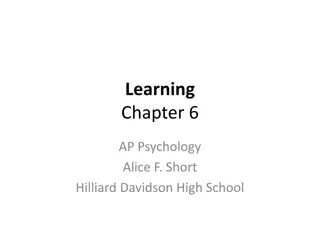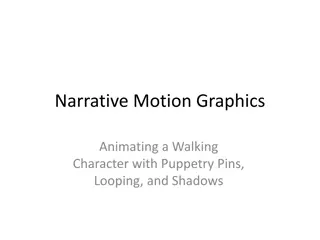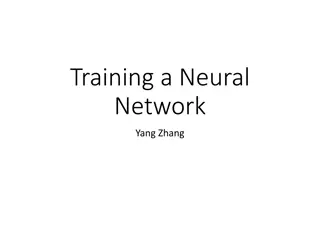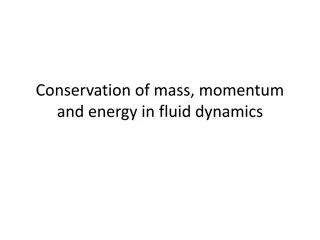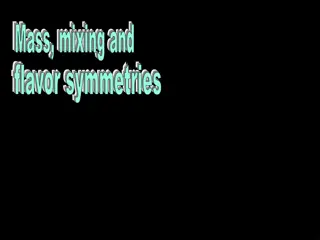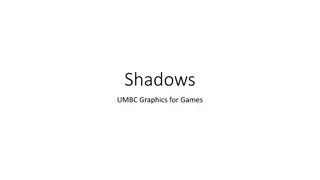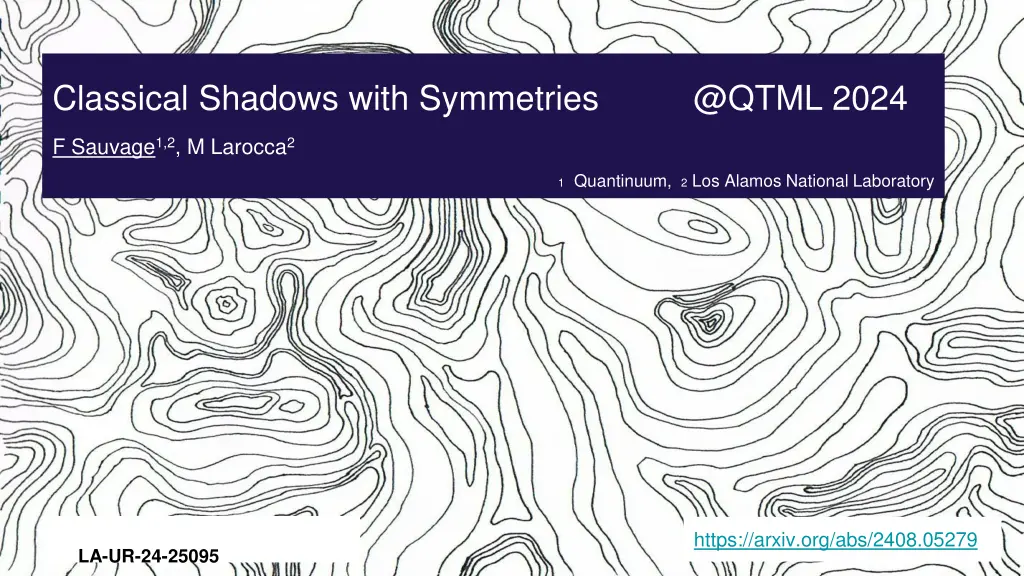
Classical Shadows with Symmetries in Quantum Systems 2024
Explore the fascinating world of Classical Shadows with Symmetries in Quantum Systems, focusing on characterizing and certifying quantum experiments, extracting information from large quantum states, and leveraging known structures to enhance learnability. Discover how symmetric operators and tailored Classical Shadows play a crucial role in this realm.
Download Presentation

Please find below an Image/Link to download the presentation.
The content on the website is provided AS IS for your information and personal use only. It may not be sold, licensed, or shared on other websites without obtaining consent from the author. If you encounter any issues during the download, it is possible that the publisher has removed the file from their server.
You are allowed to download the files provided on this website for personal or commercial use, subject to the condition that they are used lawfully. All files are the property of their respective owners.
The content on the website is provided AS IS for your information and personal use only. It may not be sold, licensed, or shared on other websites without obtaining consent from the author.
E N D
Presentation Transcript
Classical Shadows with Symmetries @QTML 2024 F Sauvage1,2, M Larocca2 1 Quantinuum, 2 Los Alamos National Laboratory https://arxiv.org/abs/2408.05279 LA-UR-24-25095
Motivations: Characterization of quantum systems and beyond Ability to prepare and operate quantum systems has dramatically increased. -> How to certify such experiments? How to extract information from large quantum states? Quantum state tomography But requires exponential resources (memory & samples) 2- Only accurate for many (not all) properties [1] Shadow tomography, Classical Shadows (CSs) [2] 1- Leverage known structure of the state: Sparsity, low entanglement, Symmetries [1] The learnability of quantum states. S Aaronson (2007) [2] Predicting Many Properties of a Quantum System from Very Few Measurements. HY Huang, R Kueng, J Preskill (2020)
Background I: Classical shadows [1] (i) Random measurements Properties: - Observables that can be estimated (visible space [2]:) - Statistical properties (variance): Random unitary + fixed measurement (ii) Post-processing (estimation) Measurement channel Tomographic-complete: Tailoring CSs: Different unitary/measurements => Different properties Can be tailored to the situation of interest Dataset [1] Predicting Many Properties of a Quantum System from Very Few Measurements. HY Huang, R Kueng, J Preskill (2020) [2] Hardware-efficient learning of quantum many-body states. K Van Kirk, J Cotler, HY Huang, M Lukin (2020)
Background 2: Symmetries Symmetries: - Group G + representation U(g) - Symmetric operators Twirl (group average): - project onto symm. space Irreducible decomposition Only symmetric parts contribute: Symmetric observable OR symmetric state, only the symmetric parts of both contribute
Symmetric Classical Shadows: Scope Setup: Either the state or the observables are symmetric. Questions: (1) Can we tailor CSs to account for symmetries? (2) How to do so? (3) What are the benefits? (1) Can we tailor CSs to account for symmetries? Only symmetric parts contribute Symmetric Classical Shadows
Symmetric Classical Shadows: An overview (2) How to design Symmetric CSs? 2 different perspectives Irreducible decomposition (i) Explicit [1]: representation theory knowledge -> Implement the block-diagonalization (ii) Symmetrize CS protocol -> Twirl (measurements and unitaries) Informative: tomographic-complete Symm. redundant information , variance bounded by Pros: Potentially shallow (or less overhead) Pros: Cons: Large circuit overhead Cons: Working out details. Only ensures [1] Efficient classical algorithms for simulating symmetric quantum systems. E Anschuetz, A Bauer, B Kiani, S Lloyd (2023)
Symmetric Classical Shadows: Concrete example Permutation-invariance: Symmetric group (Sn) Well-understood symmetries, large dimension reduction, find application in physical/synthetic problems (i) Explicit: representation theory knowledge (ii) Symmetrize CS protocol -> Twirl (measurements and unitaries) QST [1] Quantum Schur Transform Correlated random 1q rotations + Hamming-weight meas. Independent random 1q rotations + computational basis meas. -> Symmetric CSs [2] + post-processing [1] Efficient Quantum Circuits for Schur and Clebsch-Gordan Transforms. D Bacon, I Chuang, A Harrow (2006) [2] Permutationally Invariant Quantum Tomography.G T th, W Wieczorek, D Gross, R Krischek, C Schwemmer, H Weinfurter (2010)
Results: The GHZ benchmark Unknown state: GHZ state Numerical simulations at scale, comprehensive comparison. Shallow Symmetric Close to Symm-PI (Not symmetric) [1] Tomography complete [2] [1] Hardware-efficient learning of quantum many-body states. K Van Kirk, J Cotler, HY Huang, M Lukin (2020) [2] Predicting Many Properties of a Quantum System from Very Few Measurements. HY Huang, R Kueng, J Preskill (2020)
Conclusion Summary: - Motivations: embed symmetry knowledge in the design of CSs - Results: Establish criterions and guidelines for CSs with symmetries. Instantiate it for permutation-invariant problems. Going further: - Applications: State preparation, QML on graphs. - More symmetries: Shallow symmetric CSs for other group of symmetries

